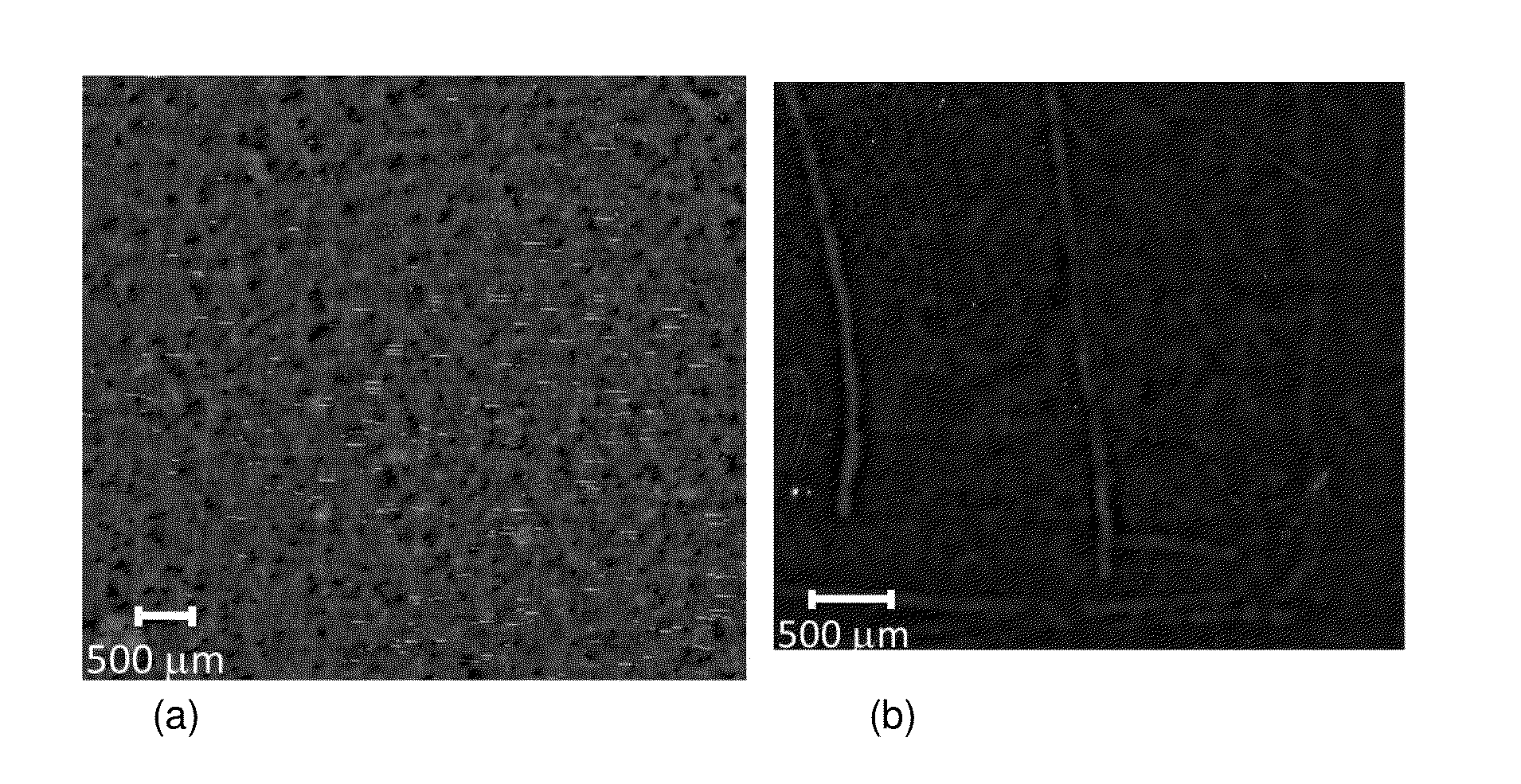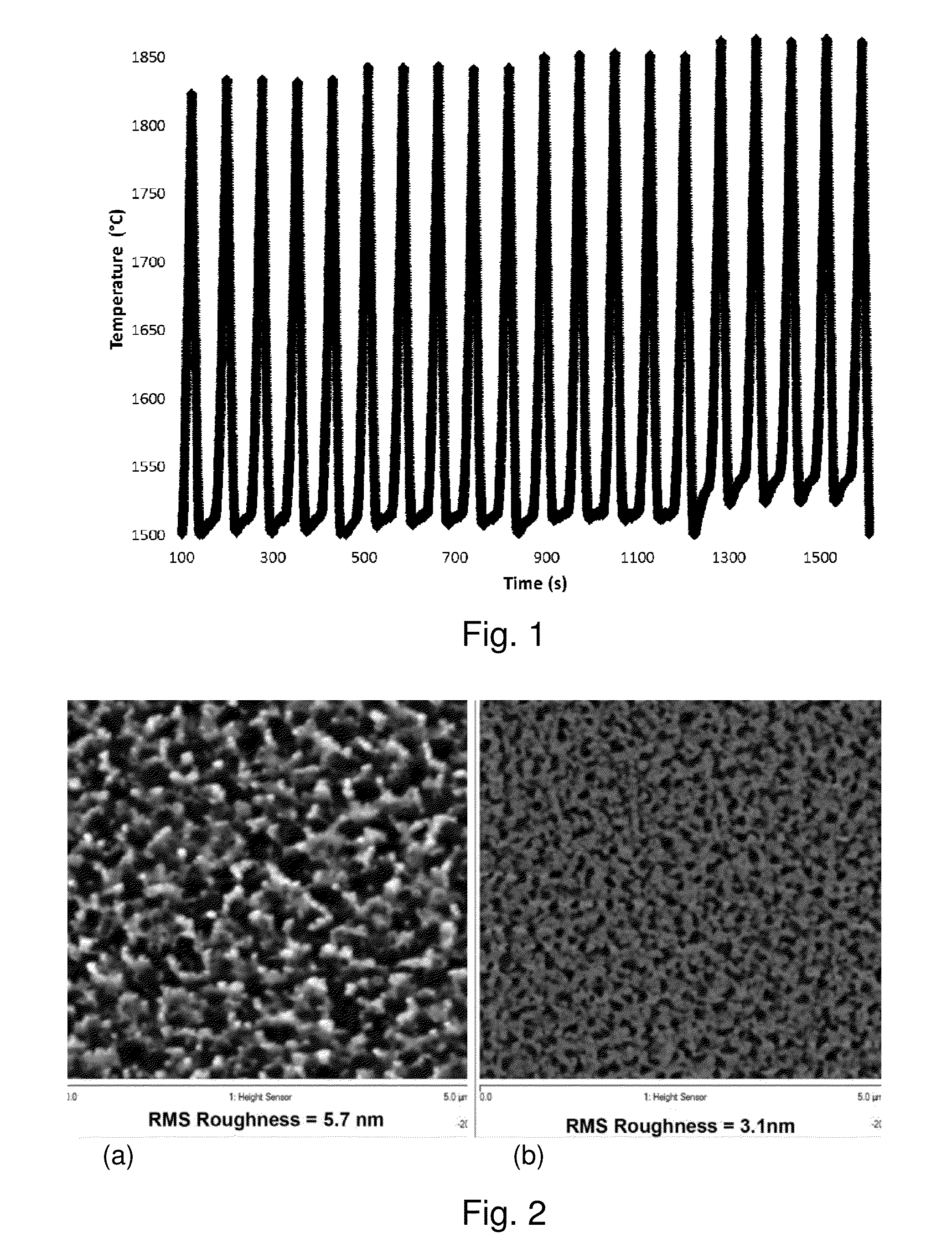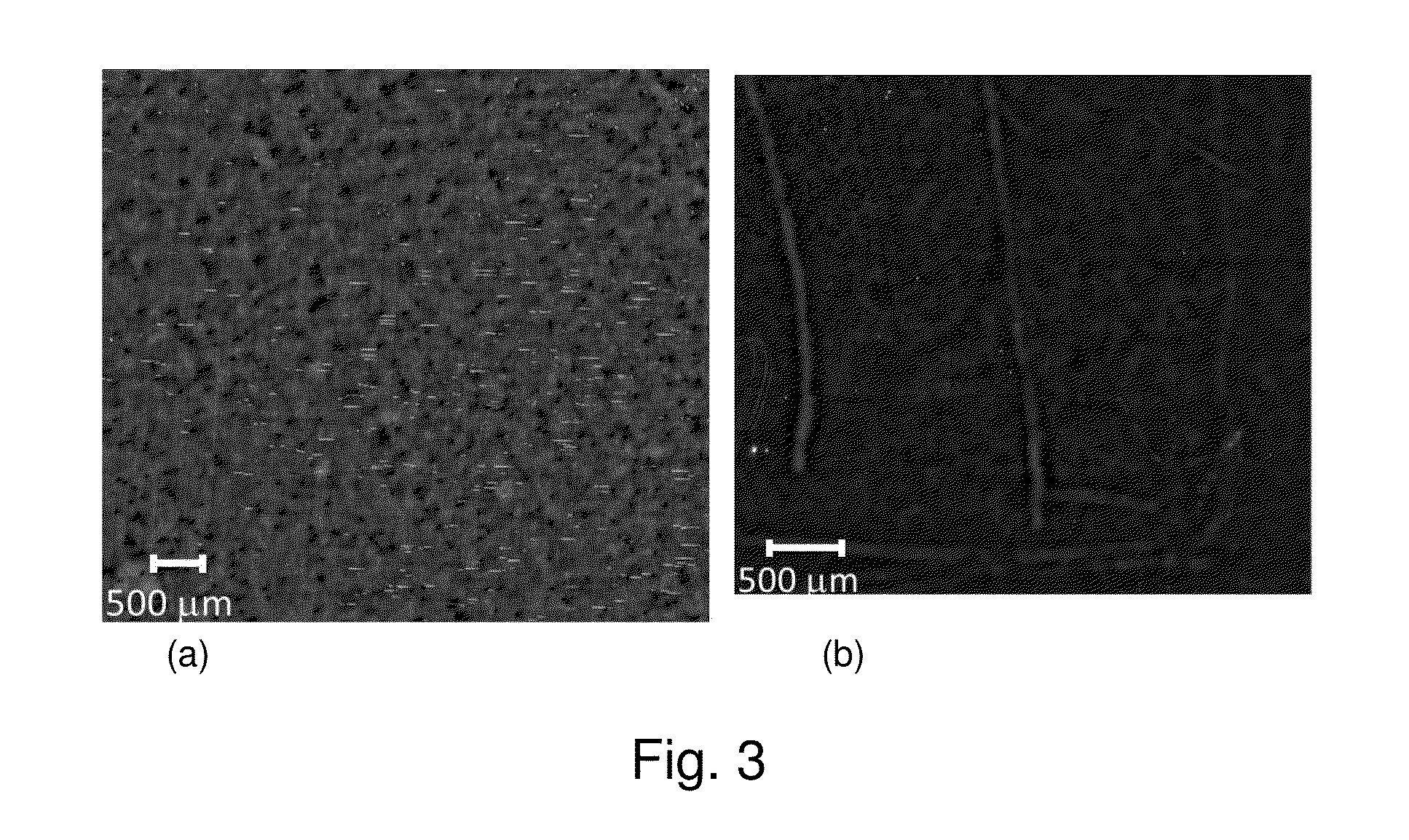Basal plane dislocation elimination in 4h-sic by pulsed rapid thermal annealing
- Summary
- Abstract
- Description
- Claims
- Application Information
AI Technical Summary
Benefits of technology
Problems solved by technology
Method used
Image
Examples
Embodiment Construction
[0021]The present invention provides a technique to remove the existing BPDs from the epilayers by using a pulsed rapid thermal annealing process where the BPDs in the epilayers were eliminated, while preserving the epitaxial surface. This high temperature, high pressure method uses silicon carbide epitaxial layers with a carbon cap to protect the surface. These capped epilayers are subjected to a plurality of rapid heating and cooling cycles.
[0022]The method of the present invention may be briefly described as follows. First silicon carbide epilayers are capped with carbon to protect the surface. Other than a carbon cap, materials, including boron nitride, can be used as well. Unlike the MRTA process described by Feigelson et al., where the AN capping layer is able to absorb and protect the GaN surface from trace amounts of oxygen in the inert annealing atmosphere, the presently described method depends on nearly complete removal of any and all trace amounts of oxygen during the pr...
PUM
 Login to View More
Login to View More Abstract
Description
Claims
Application Information
 Login to View More
Login to View More - R&D
- Intellectual Property
- Life Sciences
- Materials
- Tech Scout
- Unparalleled Data Quality
- Higher Quality Content
- 60% Fewer Hallucinations
Browse by: Latest US Patents, China's latest patents, Technical Efficacy Thesaurus, Application Domain, Technology Topic, Popular Technical Reports.
© 2025 PatSnap. All rights reserved.Legal|Privacy policy|Modern Slavery Act Transparency Statement|Sitemap|About US| Contact US: help@patsnap.com



